Olean Conglomerate (Lesley, 1875)
Lithology. The sporadic outcrops of the Olean Conglomerate were confined to the tops of hills and ridges in the southernmost section of the study area. The observed outcrops tend to occur as very large boulders and were seldom in place. Outcrop thickness ranges from 4.5 meters at Thunder Rocks in the Limestone quadrangle, 9.3 meters at Flatiron Rock in the Olean quadrangle and 1.7 meters at White Hill in the Allentown quadrangle. The Olean Conglomerate is an oligomict quartz conglomerate that contains beds of both paraconglomerates and orthoconglomerates. The white, cloudy quartz clasts vary from oblate discoids to oblate spheroids that range in size from 0.3 to 4 centimeters. Bedding within the Olean Conglomerate consists primarily, of large, tabular cross-beds and steep dipping foresets. In the sandier paraconglomerate beds, small channels were observed. Observed flow directions vary depending on the outcrops observed; at Thunder Rocks and the quarry on Moore Ridge have the cross-beds all dipping to the east. At Flatiron Rock, the large foresets at the base contain both east and west trending flow; for the rest of the outcrop the cross-beds indicated a consistent eastern flow.
Ichnology. No traces fossils were observed in the outcrops of the Olean Conglomerate.
Interpreted Depositional Environment. The documented unconformities occurring below the Olean Conglomerate and conglomerate of the Knapp Formation (Tesmer, 1975), are interpreted to represent transgressive surfaces of erosion. The shape of the quartz clasts in both conglomerates suggest that the clasts were deposited in both beach and fluvial environments. The presence of both types of clasts intermixed within the beds of the Olean and Knapp formations suggests the conglomerate has been formed from eroded, reworked and redeposited unconsolidated sediments that were deposited in the immediate area and indicates that these were transgressive deposits. The Olean Conglomerate and Knapp Formation are interpreted as transgressive lags deposits; however, due to the limited exposure in the study area, it is difficult to differentiate the conglomerates as incised valley fills, or transgressive shoreface deposits. However, the sedimentary structures observed in the Olean Conglomerate favor deposition as incised valley fill.
Olean Conglomerate
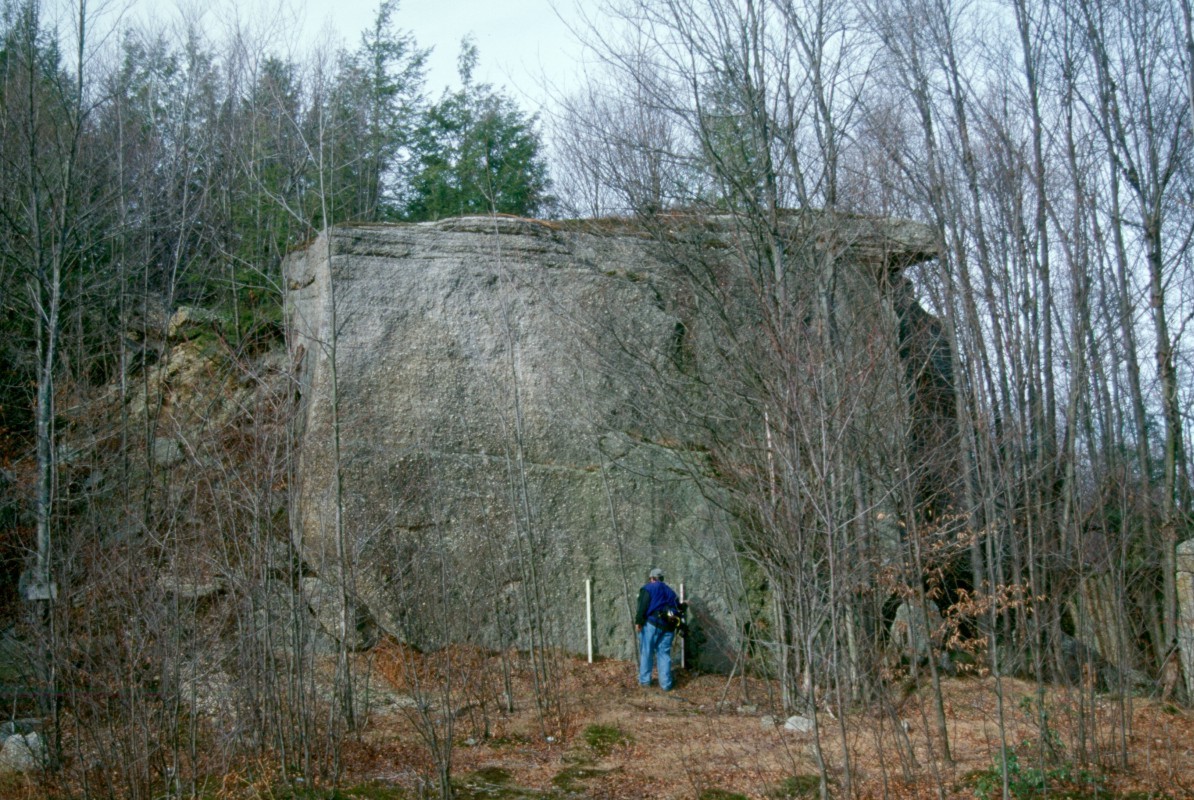
Outcrop of the Olean Conglomerate along Moore Ridge.
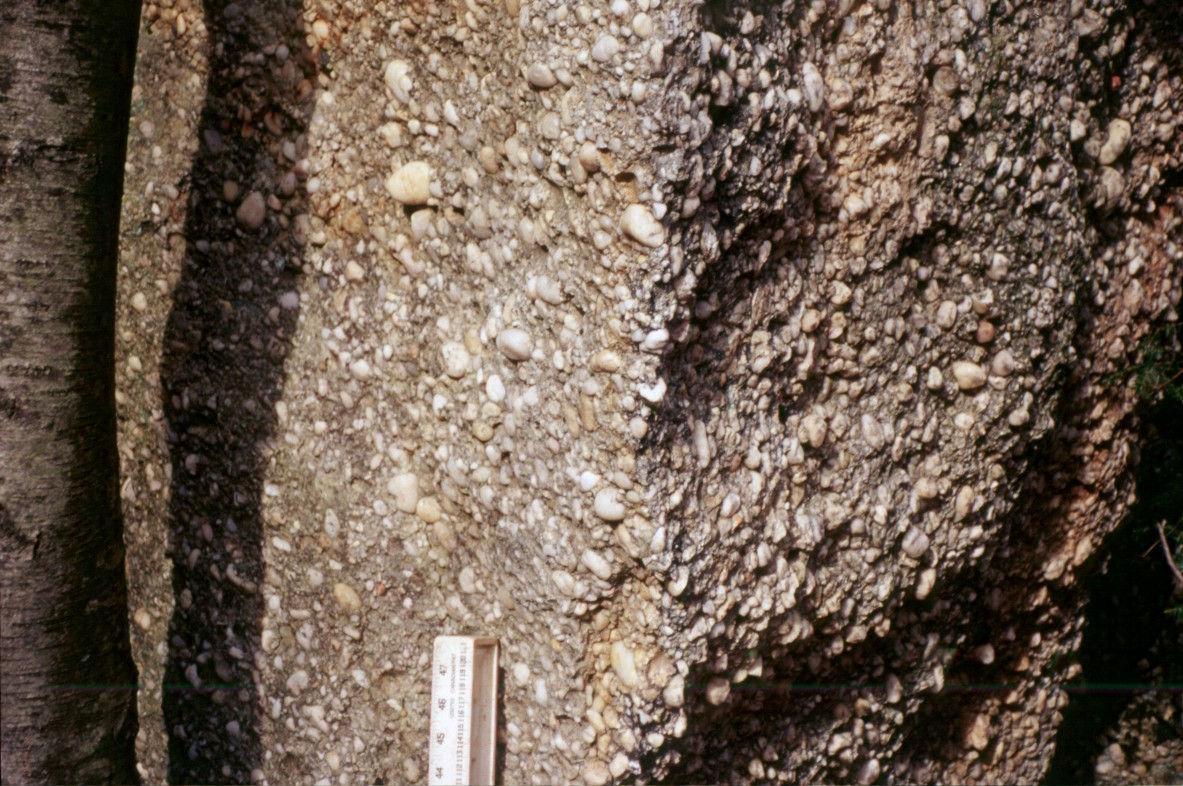
Close up of the lithology of the Olean Conglomerate
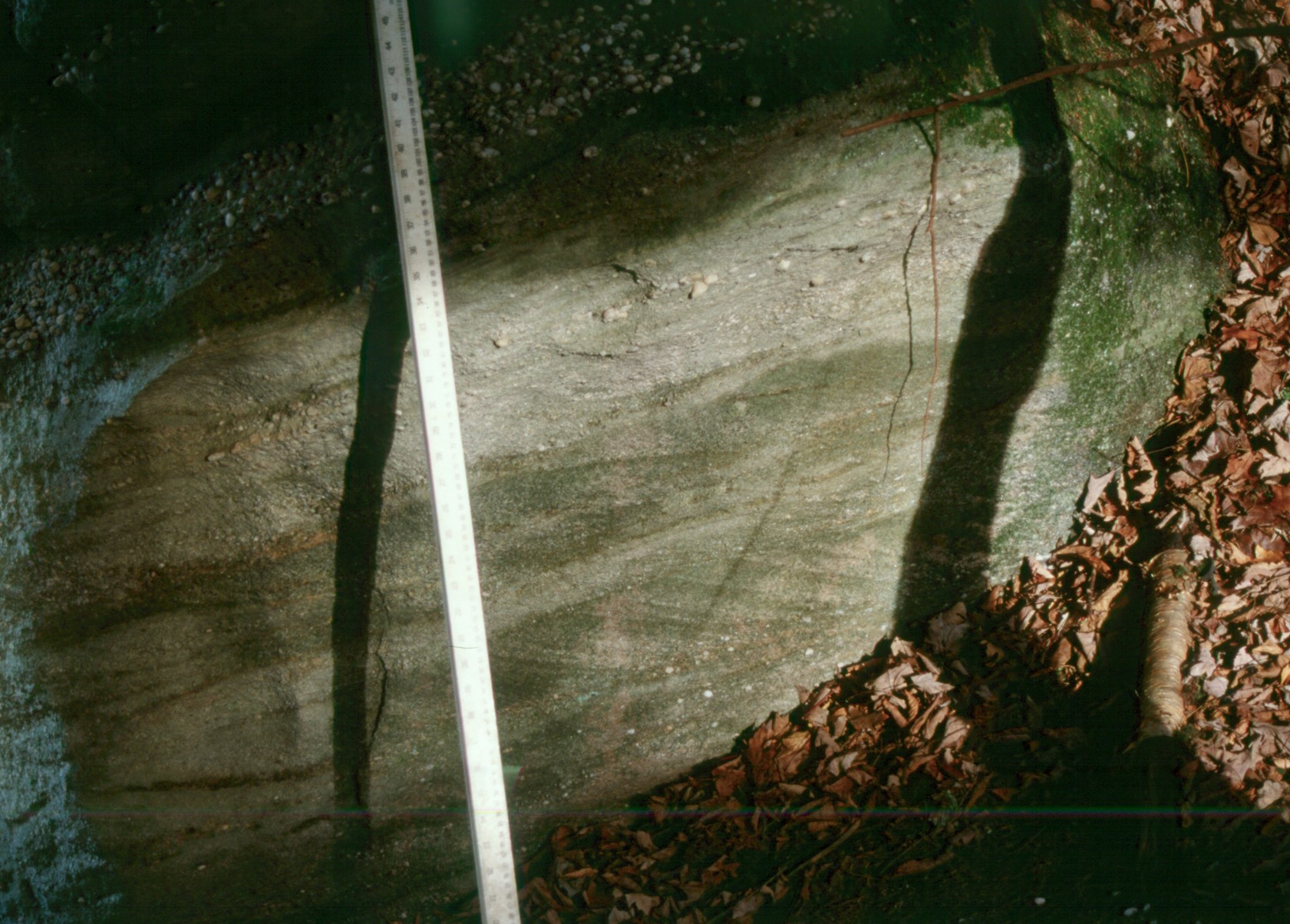
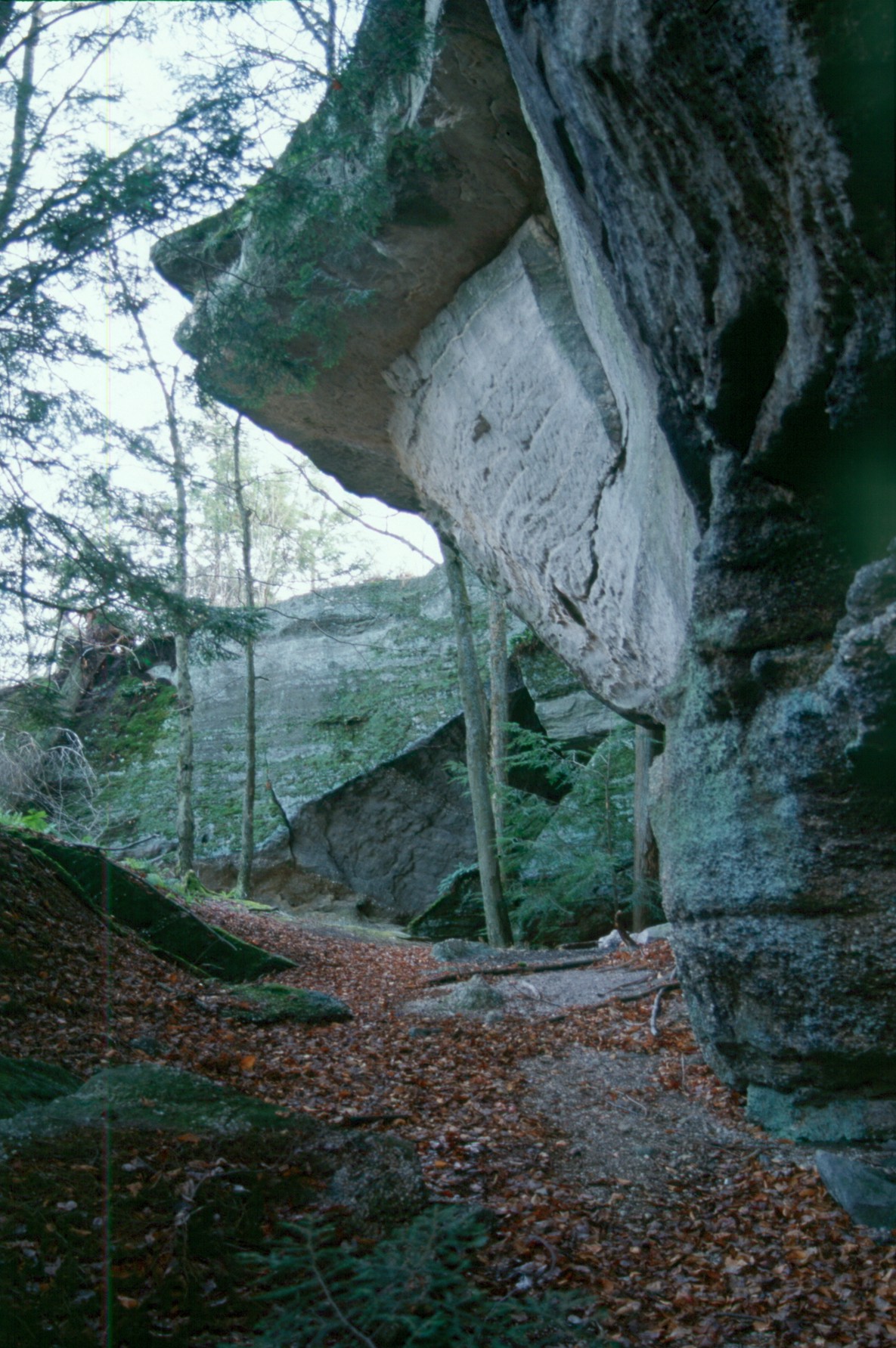
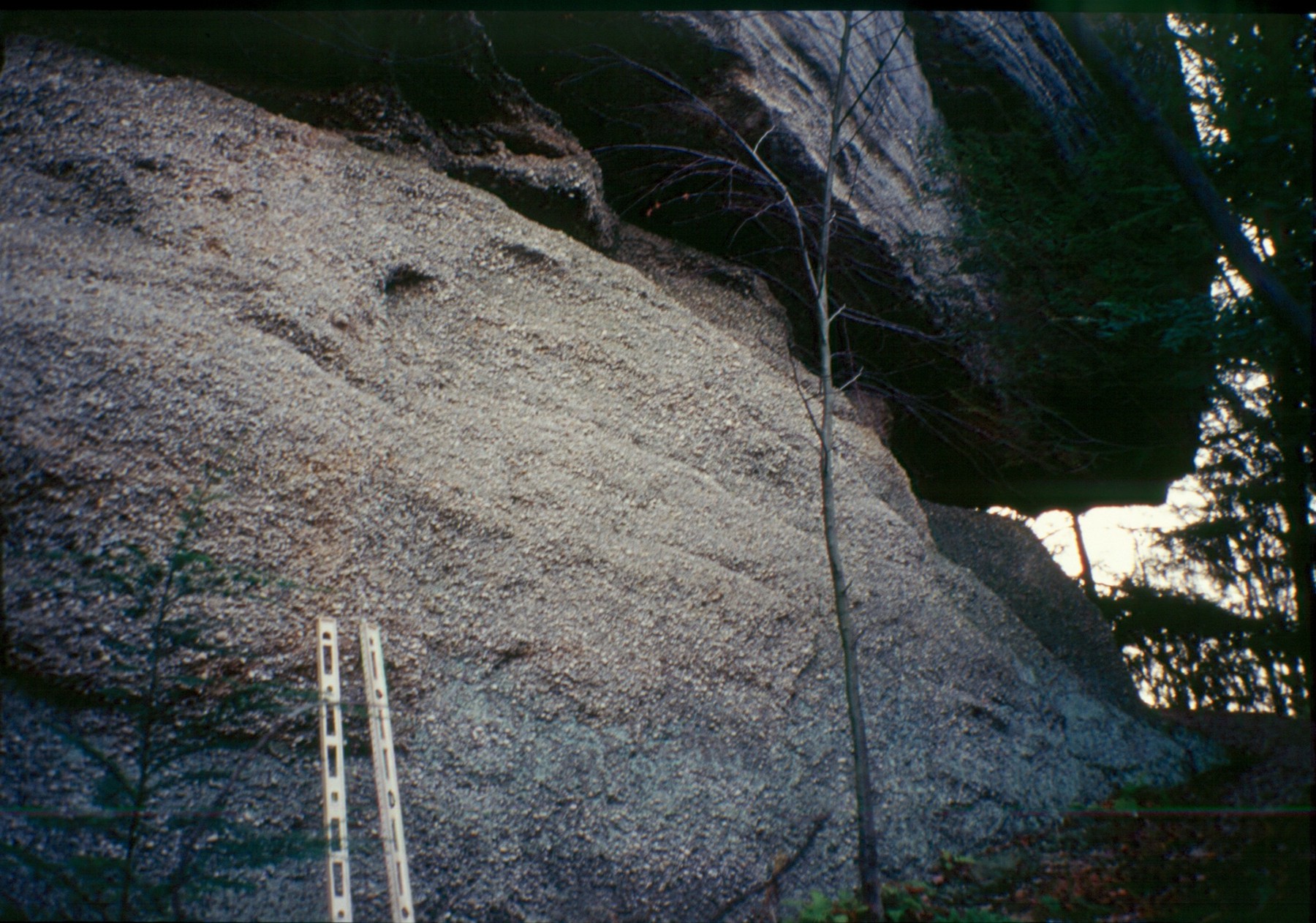
Three views of Flatiron Rock, Olean Conglomerate in the Olean 7.5 topographic quadrangle.